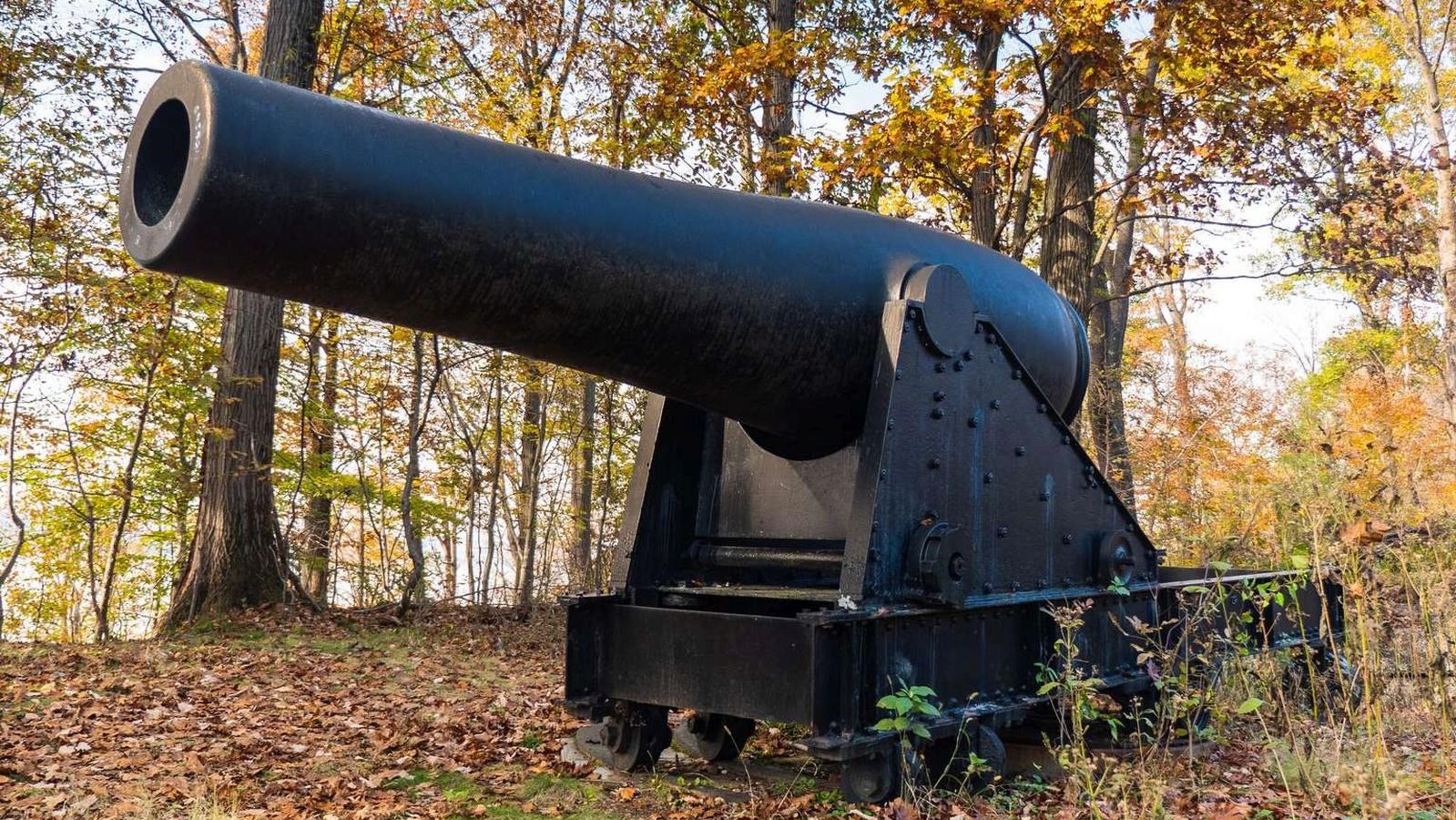Last updated: June 17, 2022
Place
Fort Foote

Historical/Interpretive Information/Exhibits, Picnic Table, Trailhead
In October 1862, Secretary of War Edwin M. Stanton appointed a commission to examine the efficiency of the Defenses of Washington. The commision evaluated each of the forts, and made recommendations for improvement. Toward the end of the account, one gap was noted in the defensive arrangement:
"The commission furthers their opinion that the Defense of Washington cannot be considered complete without the defense of the river against an enemy's armed vessels. Foreign intervention would bring against us always in superior naval force on the Potomac, and we are, even now, threatened with Confederate iron-clads fitted in English Ports. The Commission believe on Jones' Point near Alexandria, a battery of six guns of the heaviest caliber, say four 200-pounders and two 15-inch guns in casements, and by constructing a battery of ten guns and a covering work on the opposite shore of the Potomac, at the near Roziers Bluff. An examination had been made, revealing a most favorable and strong position on that side, easily communicated with by water. Surveys are in progress."
The suggestion of the committee was accepted, and the work on Fort Foote began at Rozier's Bluff in 1863.
The grand earthwork was first constructed in 1863 by the 9th New York Heavy Artillery, commanded by Colonel William Seward, Jr. The site, together with Battery Rodgers in Alexandria, Virginia, was designed for river defense. Their massive 15-inch Rodman guns (Columbiads) and 200-pounder Parrott rifles possessed the firepower to penetrate enemy ironclad ships. The Federal engineers had perfected earthwork construction around Washington D.C. by this point in the war. Brigadier General John G. Barnard, Chief Engineer Defenses of Washington, described the two sites as "model works."Fort Foote was named in honor of Rear Admiral Andrew H. Foote, who distinguished himself in the actions against the confederate forts on the Mississippi Rivers and died of wounds on June 26,1863.
Fort Foote's guns became a tourist attraction for government officials, military officers, and well-connect civilians, who traveled on river transports from the city to the Maryland shoreline to see the 49,000 lbs Rodmans test fired. General Barnard invited President Abraham Lincoln to visit the fort in late 1863.
Fort Foote remained an active military installation until 1874. The U.S. Army performed a number of tests and experiments with cannons, carriages, and stone magazines at the site.
- Duration:
- 2 minutes, 5 seconds
An overview of the Civil War Defenses of Washington, the roles of Fort Stevens and other forts in the Civil War, and how park visitors can experience these places today.
